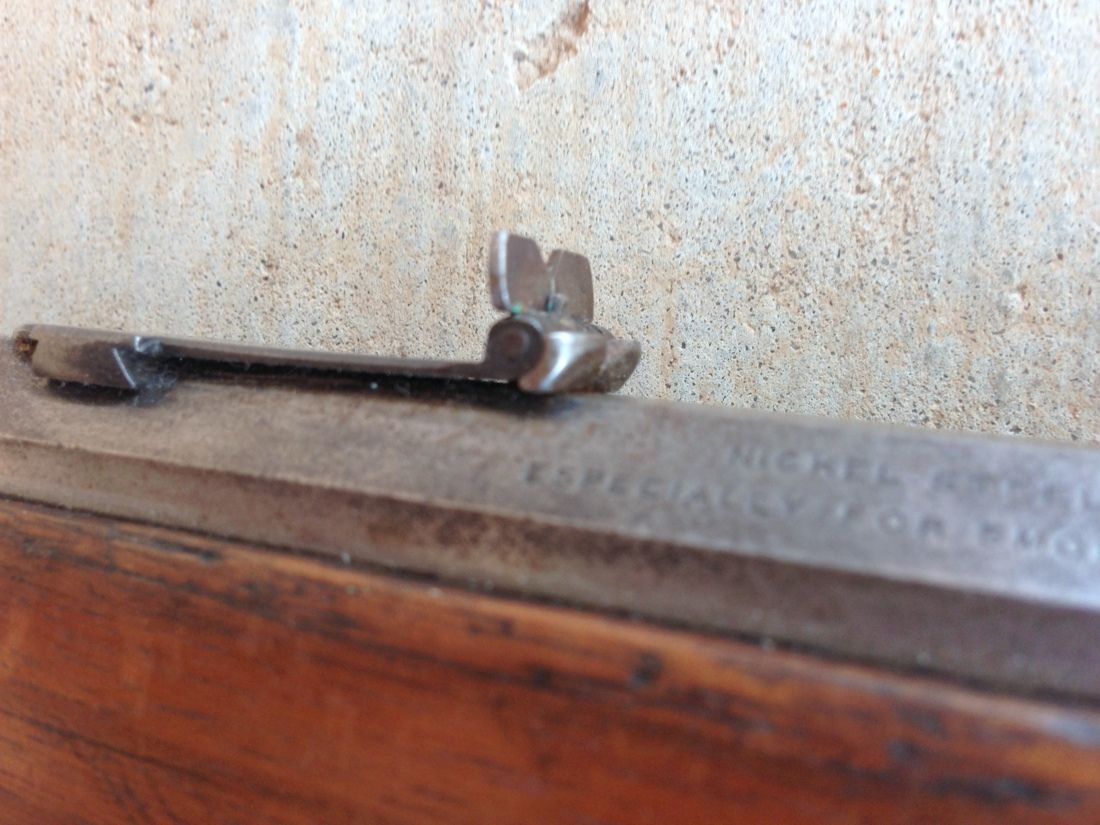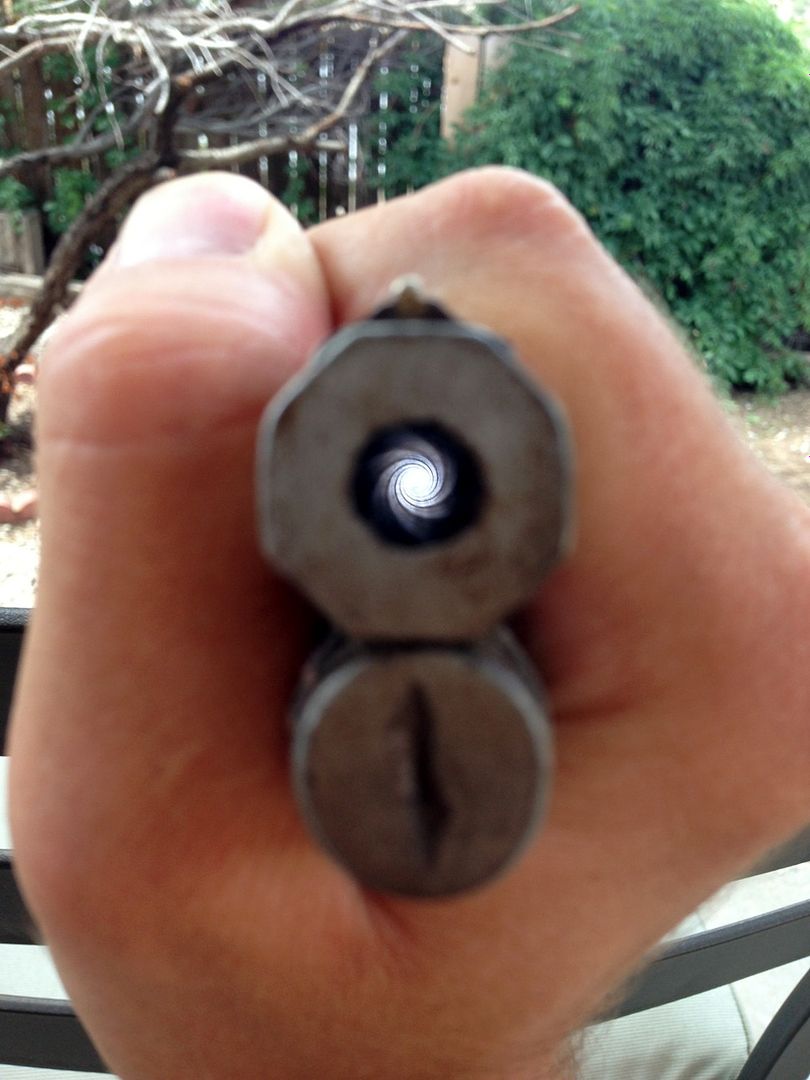Hi gents,
This is my first post, and I'm relatively new to the gun world. I started actively shooting only 6 months ago and have made very few purchases of firearms. The one I absolutely had to purchase was the following Winchester Model 1894. I live in north western New Mexico (a border town to the Navajo, Hopi, and Zuni reservations), and have a good friend who's lived here for 50+ years. When I started to get into shooting he was very helpful, and when I mentioned Winchester 94s he asked me to stop by his shop. He had three; the one I purchased (shown below), a very nice 1940s example, and a post '64 model. When asked if he'd be interested in selling the early example, he told me to do some research and then come on back. I spent several hours on the internet over the weekend and decided it was a "must have". Returning, he was happy to hear of all the info I uncovered and then let me set the price.
The serial number (and a call to Winchester to confirm) dates this firearm to the year 1897. It's a carbine, with octagon barrel (apparently a $1.50 option at the time), nickle steel barrel, and chambered for the newly released 30 WCF cartridge (Winchester Center Fire - later to be renamed: 30-30). The 1894 was Winchester's first use of nickle steel, which was said to be used in the US Army's Krags (The Krags were also smokeless small bores, but not on the market). I sure wish this old gun could talk, as it looks to have led an interesting life. I'll certainly enjoy owning a small piece of local history.

If I'm measuring the barrel correctly, it's a 16 inch carbine:





...to be continued
This is my first post, and I'm relatively new to the gun world. I started actively shooting only 6 months ago and have made very few purchases of firearms. The one I absolutely had to purchase was the following Winchester Model 1894. I live in north western New Mexico (a border town to the Navajo, Hopi, and Zuni reservations), and have a good friend who's lived here for 50+ years. When I started to get into shooting he was very helpful, and when I mentioned Winchester 94s he asked me to stop by his shop. He had three; the one I purchased (shown below), a very nice 1940s example, and a post '64 model. When asked if he'd be interested in selling the early example, he told me to do some research and then come on back. I spent several hours on the internet over the weekend and decided it was a "must have". Returning, he was happy to hear of all the info I uncovered and then let me set the price.
The serial number (and a call to Winchester to confirm) dates this firearm to the year 1897. It's a carbine, with octagon barrel (apparently a $1.50 option at the time), nickle steel barrel, and chambered for the newly released 30 WCF cartridge (Winchester Center Fire - later to be renamed: 30-30). The 1894 was Winchester's first use of nickle steel, which was said to be used in the US Army's Krags (The Krags were also smokeless small bores, but not on the market). I sure wish this old gun could talk, as it looks to have led an interesting life. I'll certainly enjoy owning a small piece of local history.

If I'm measuring the barrel correctly, it's a 16 inch carbine:





...to be continued
Last edited:








